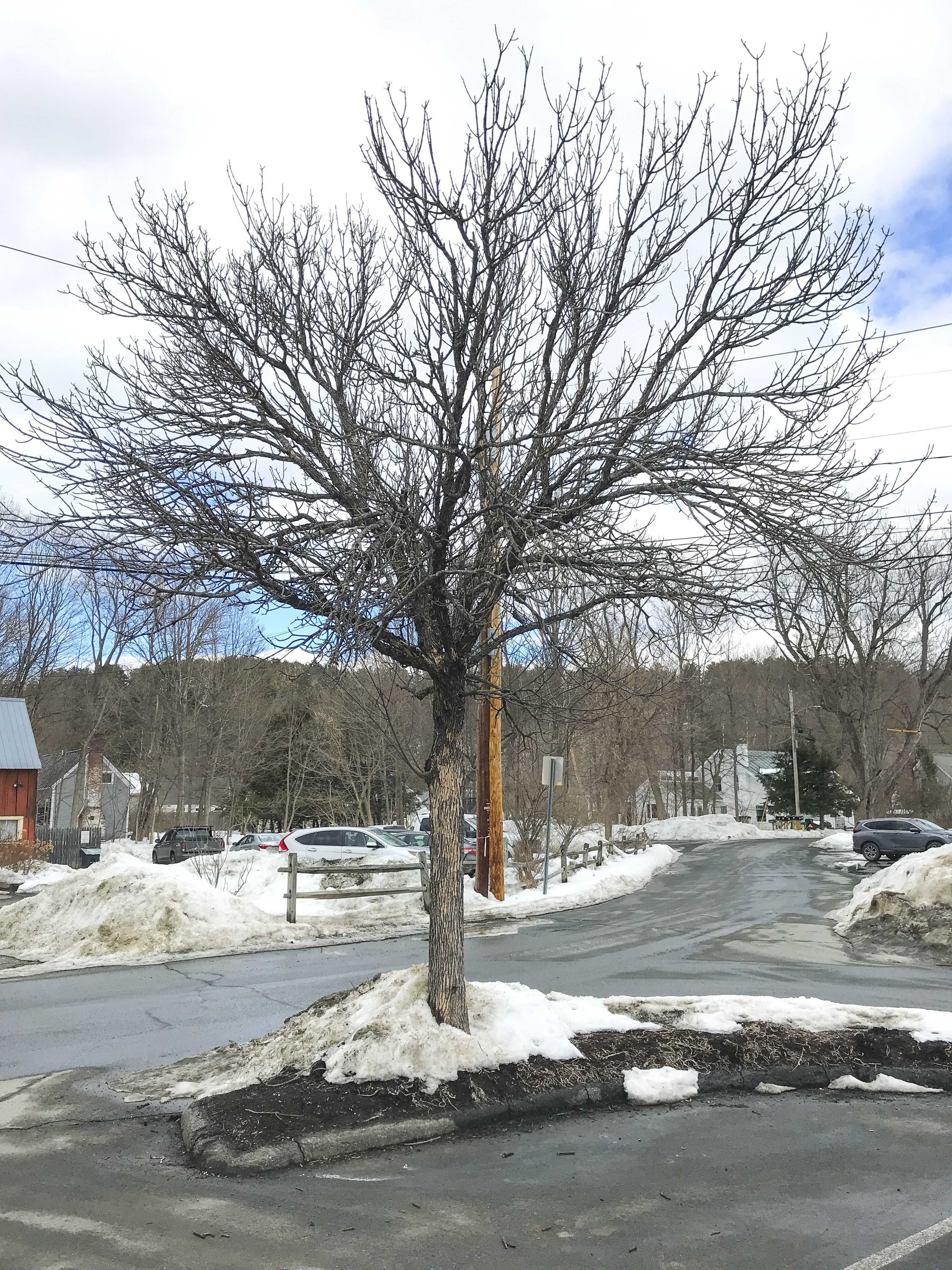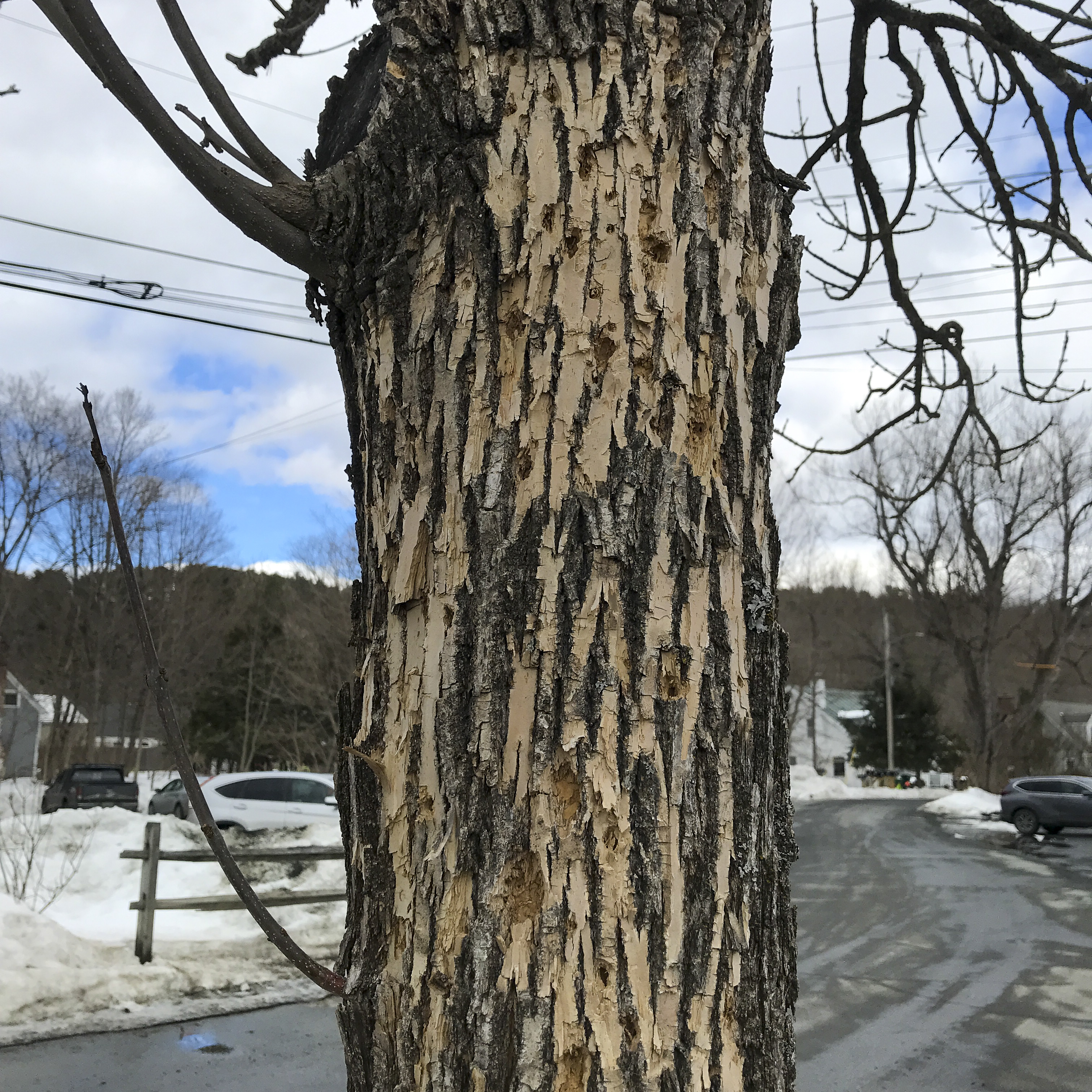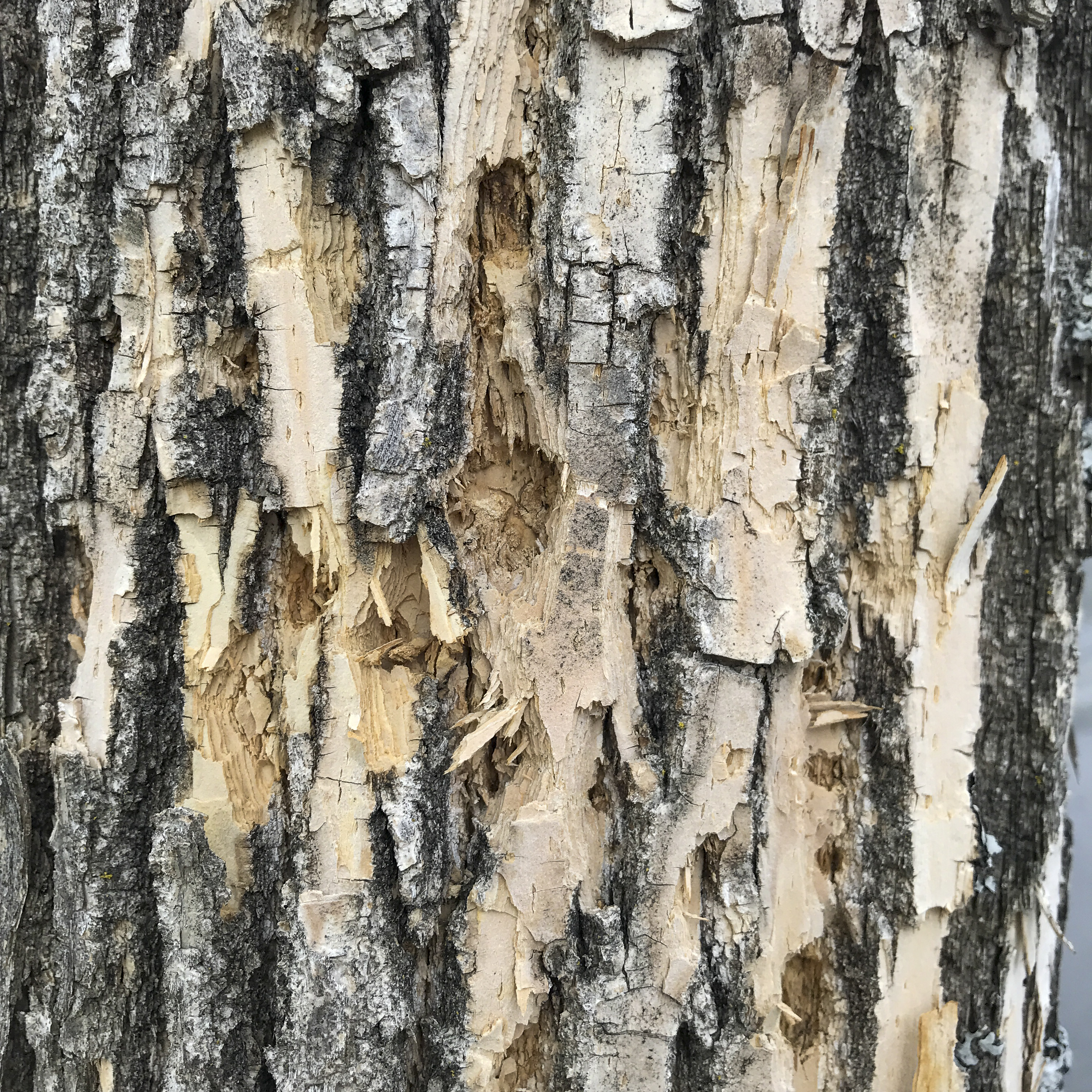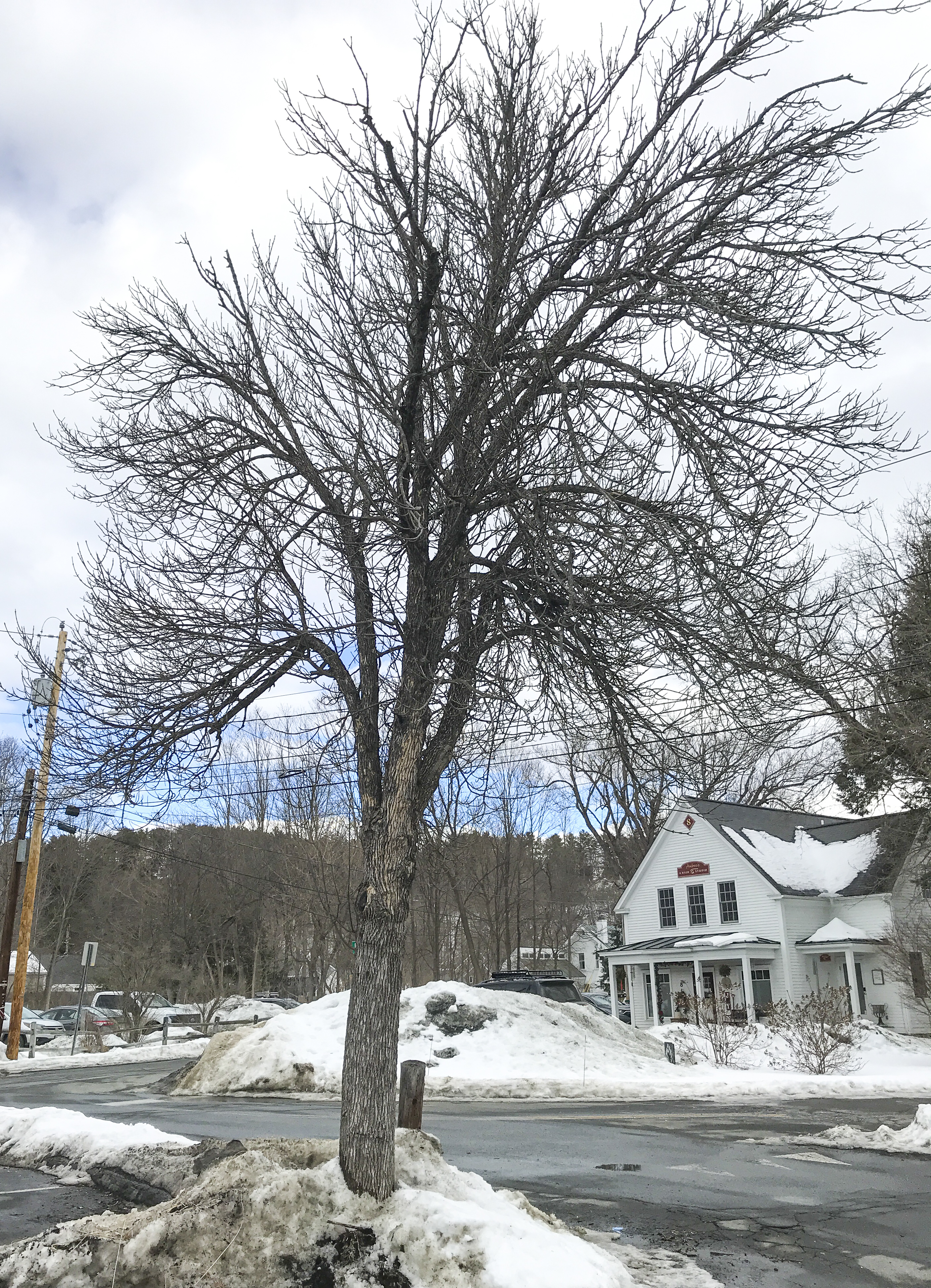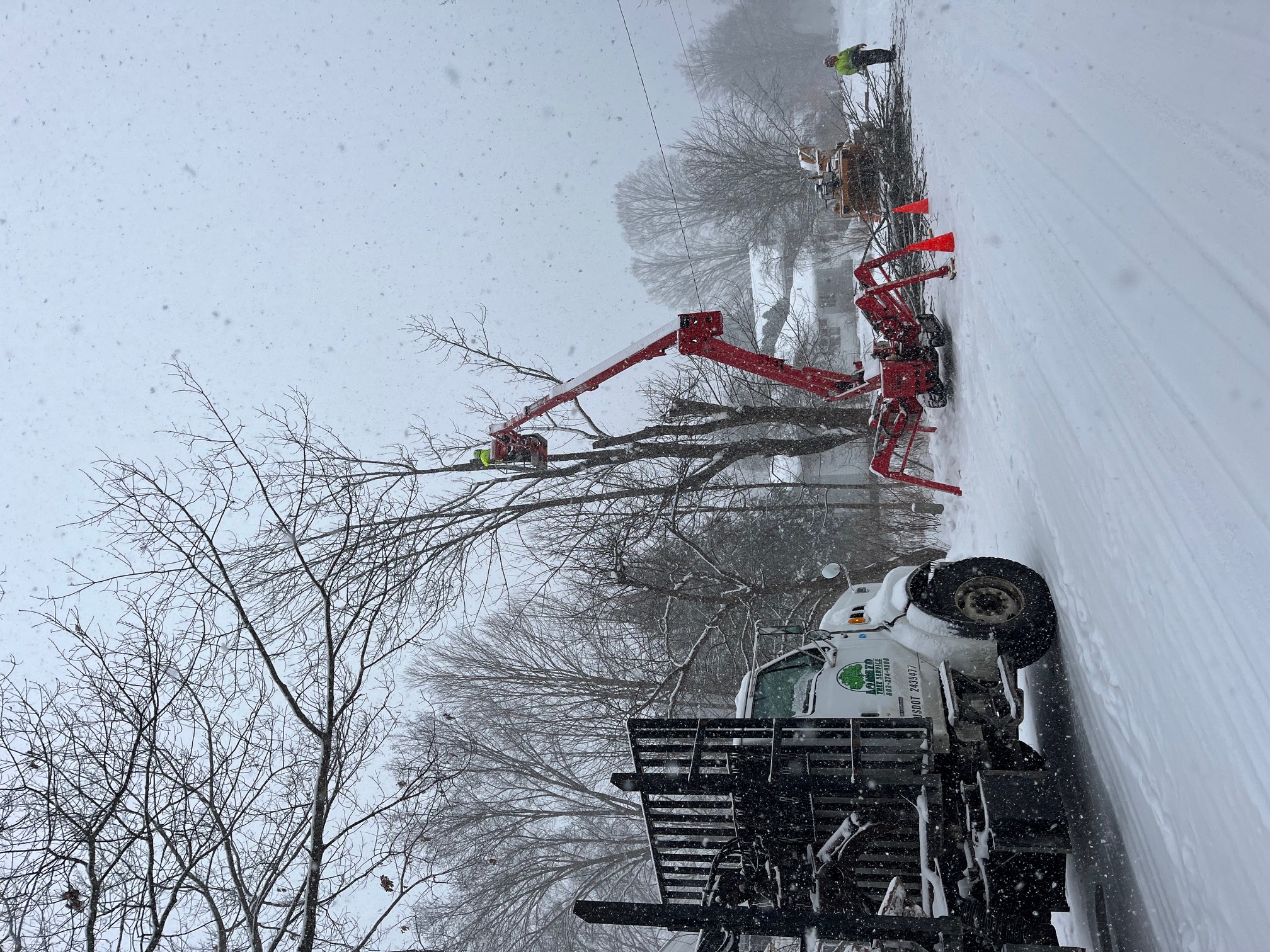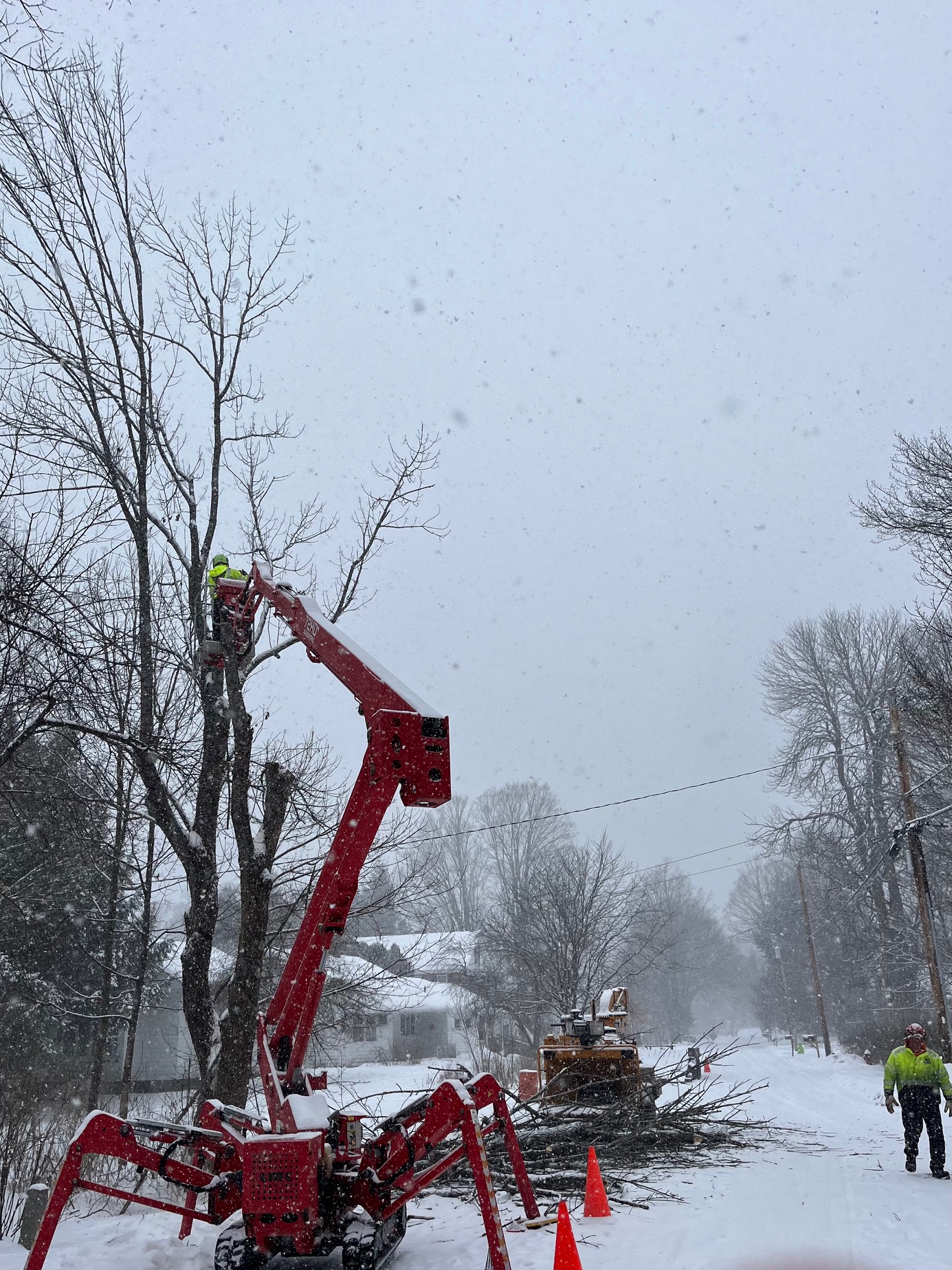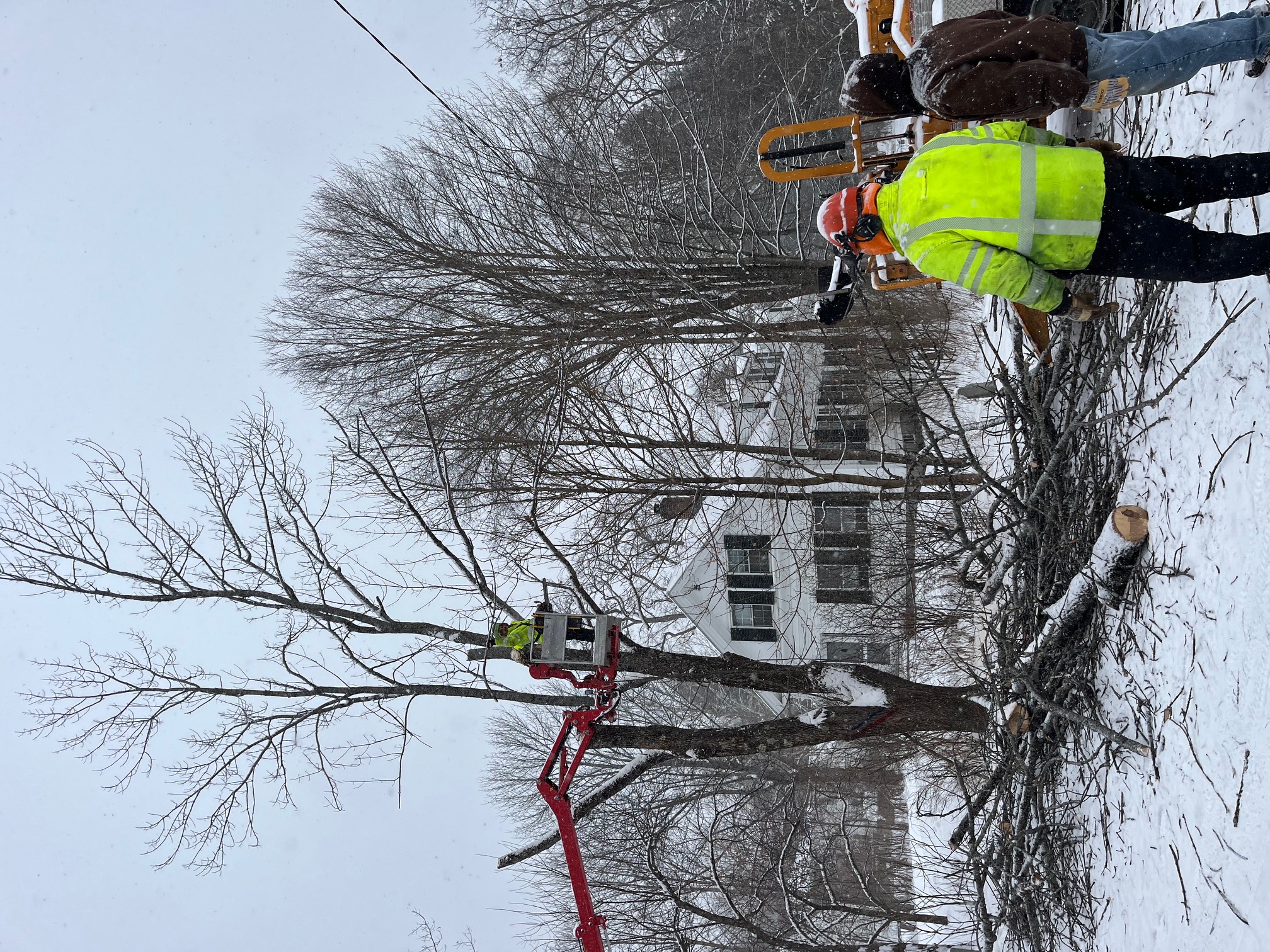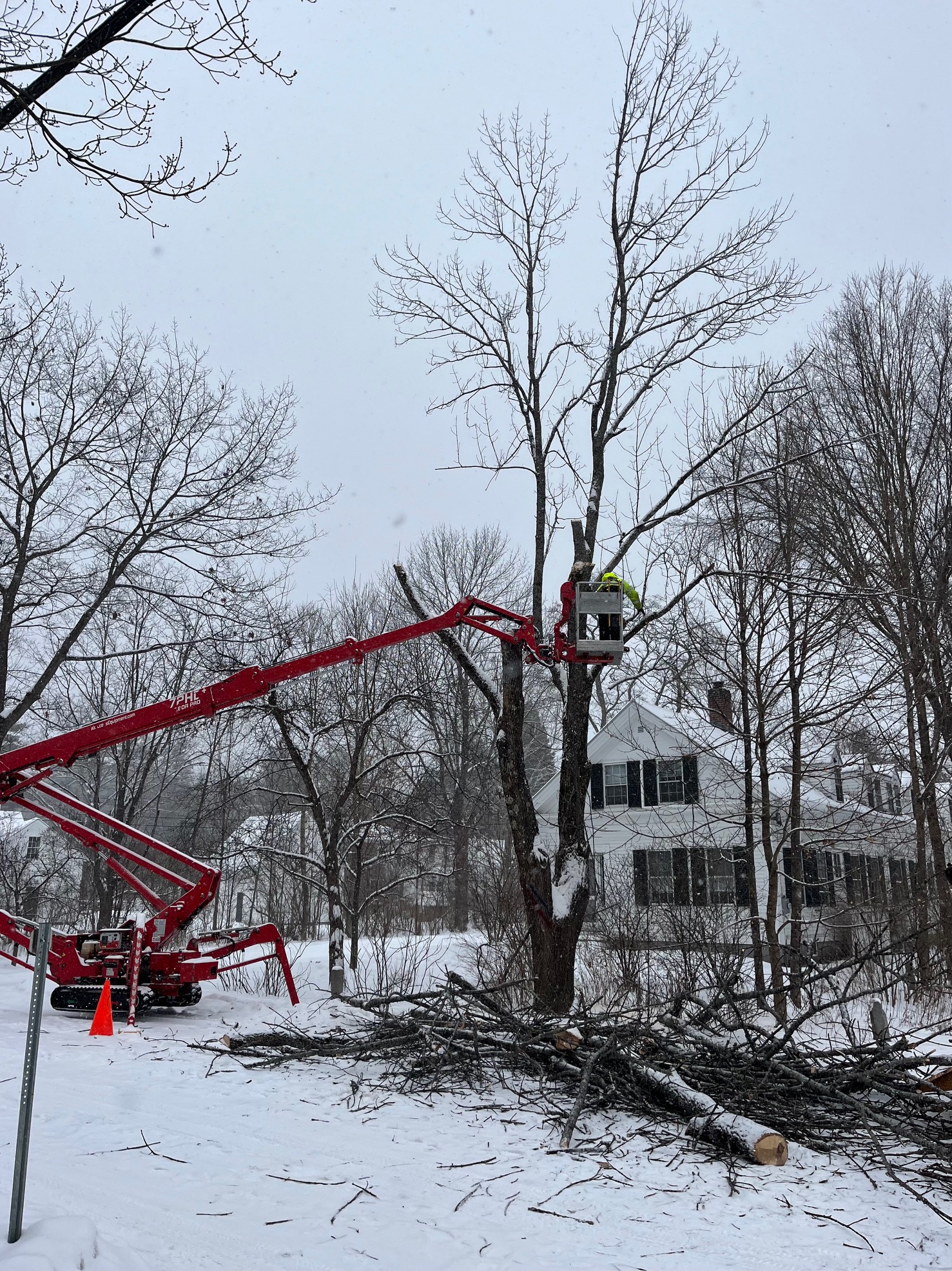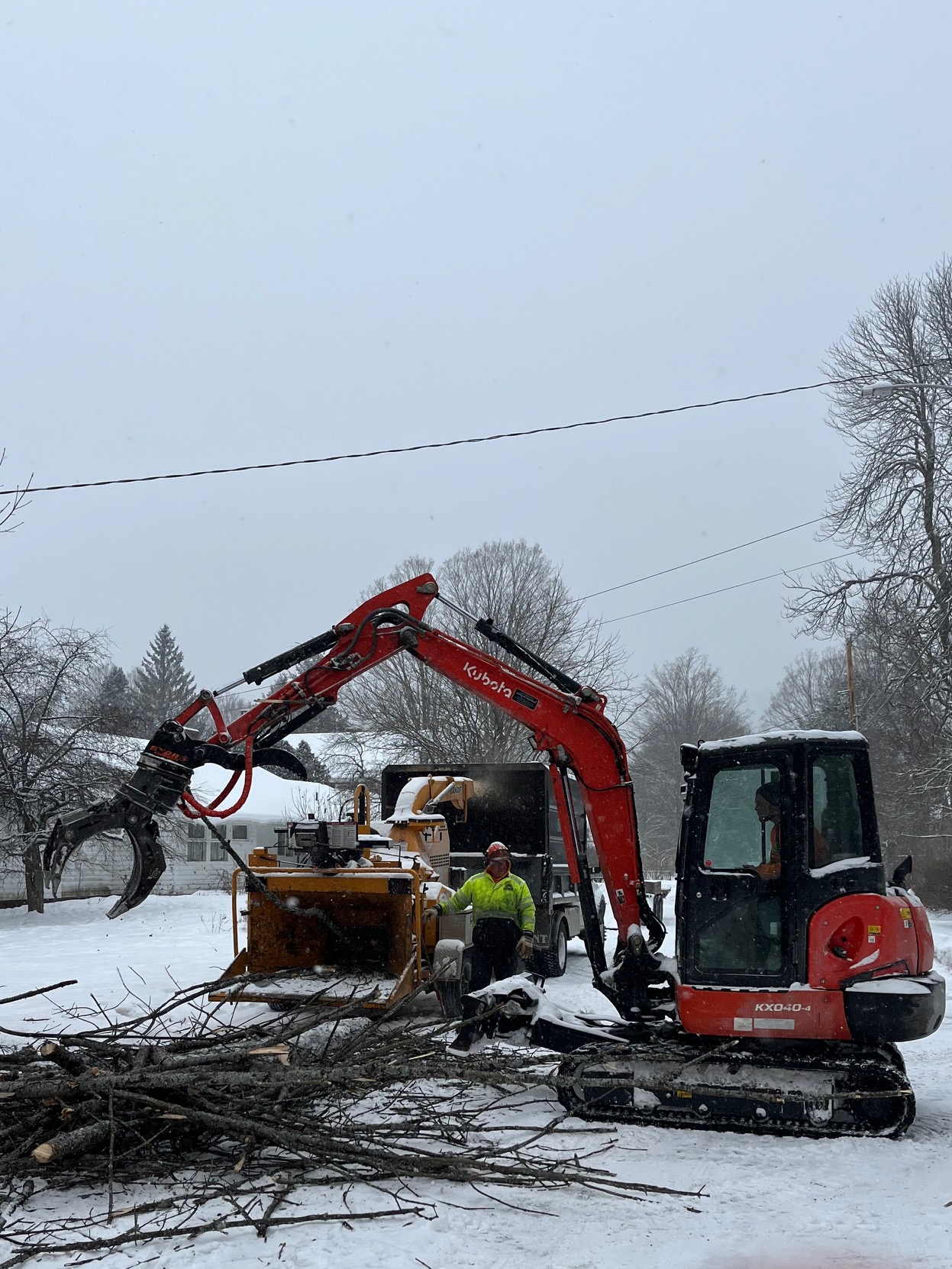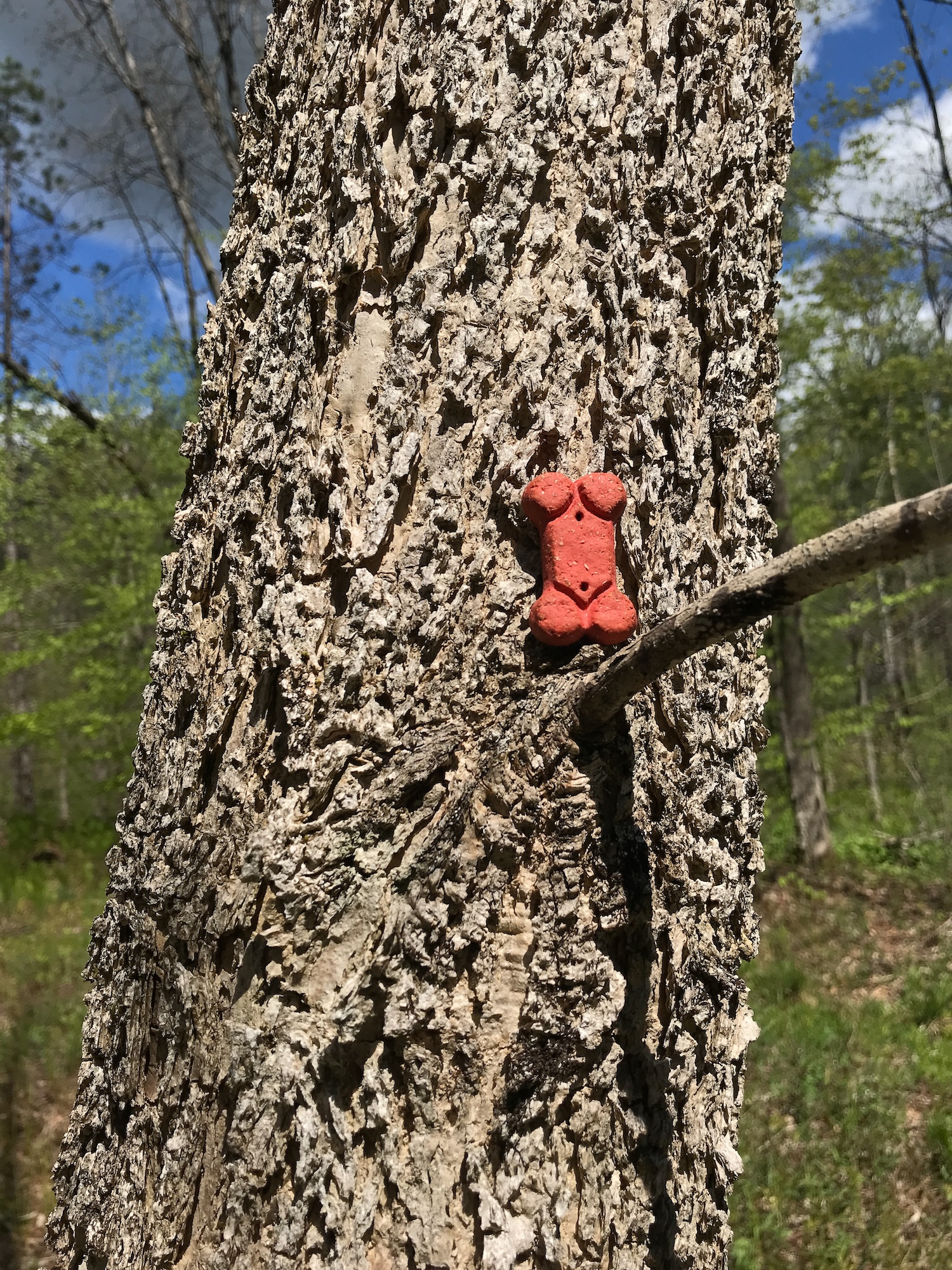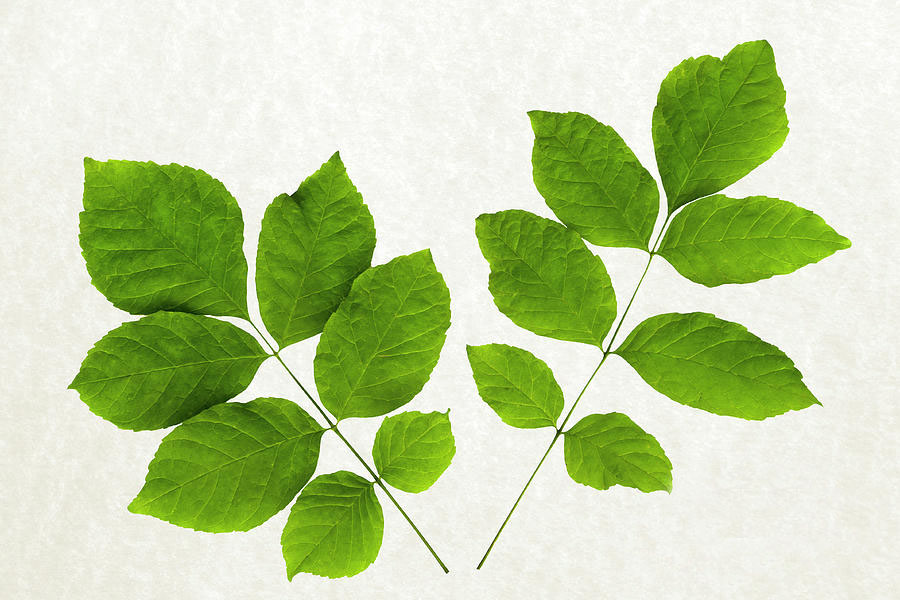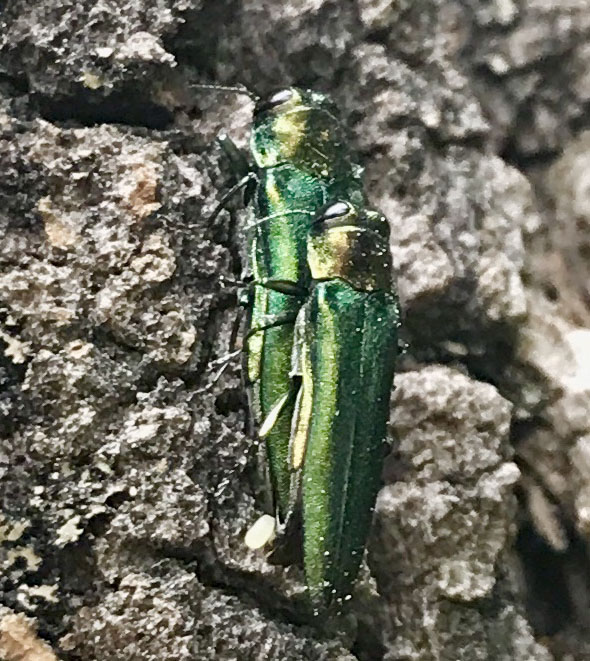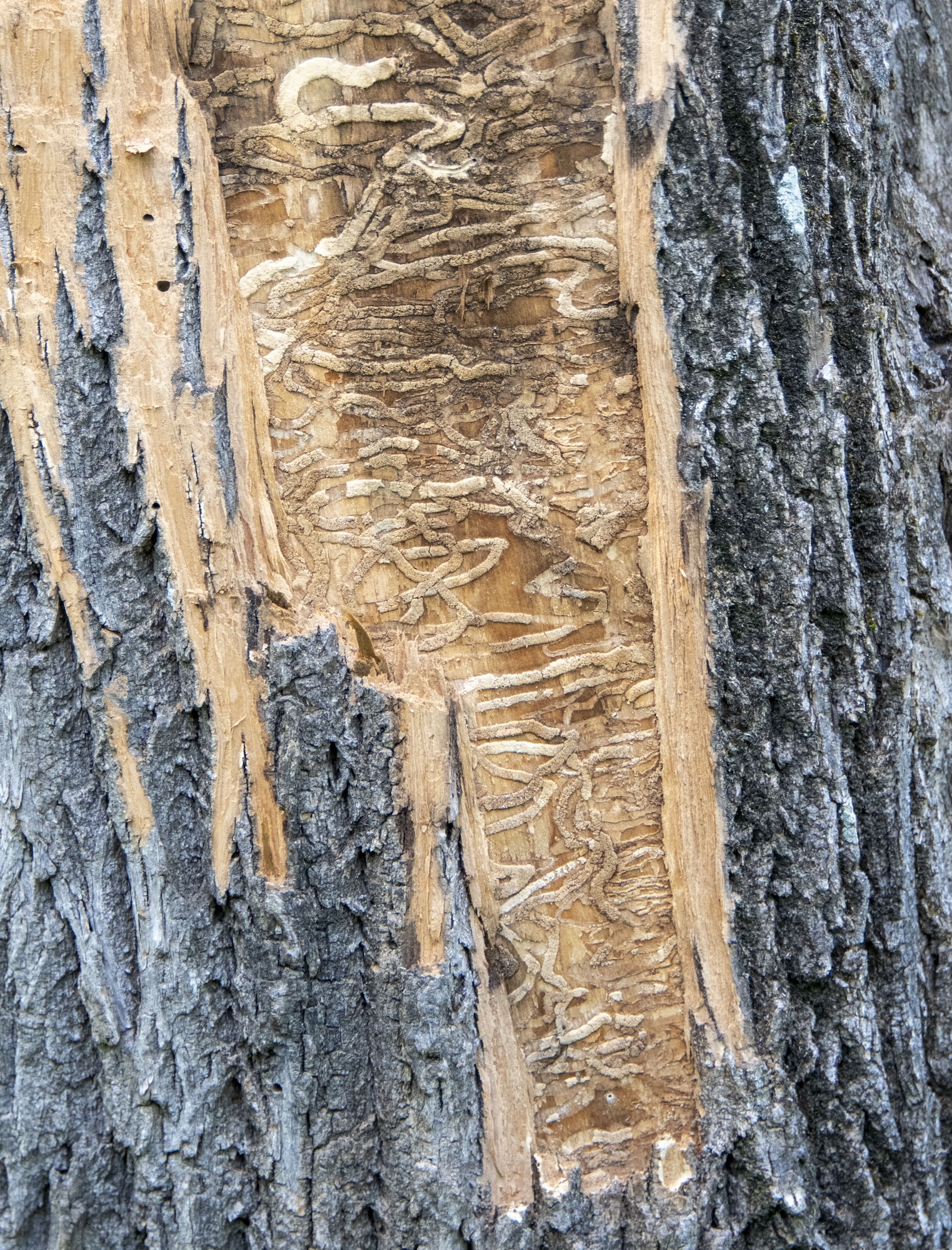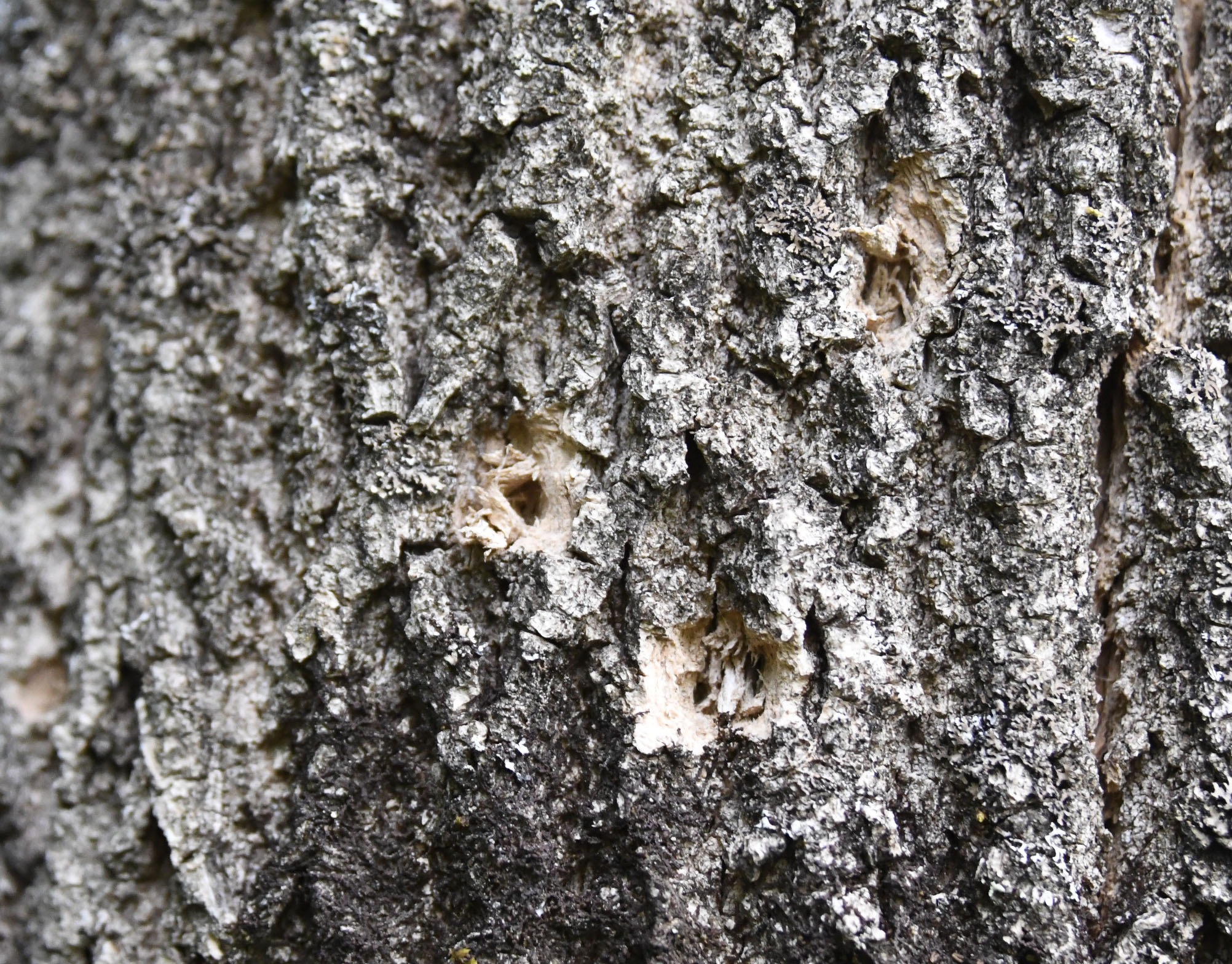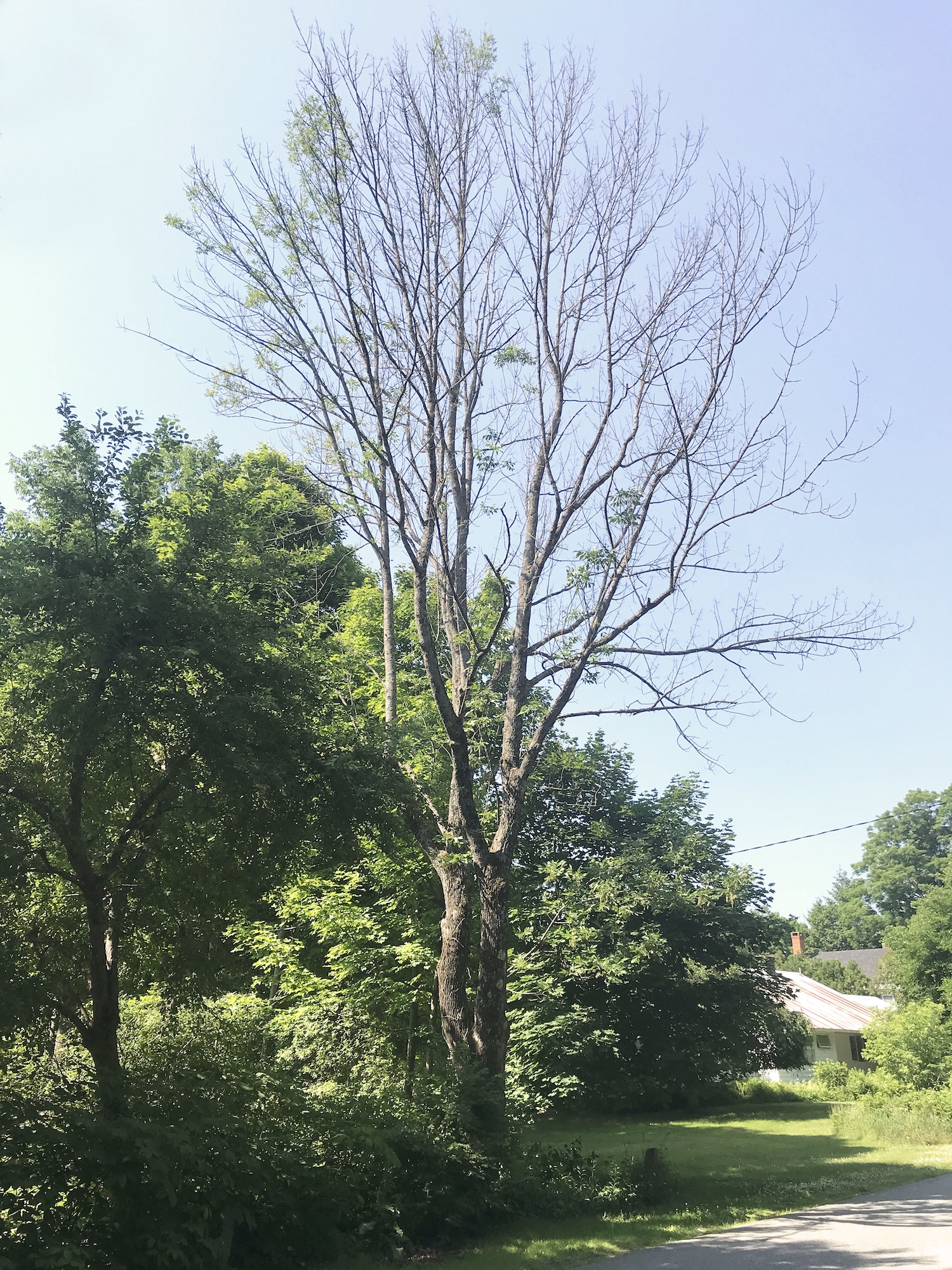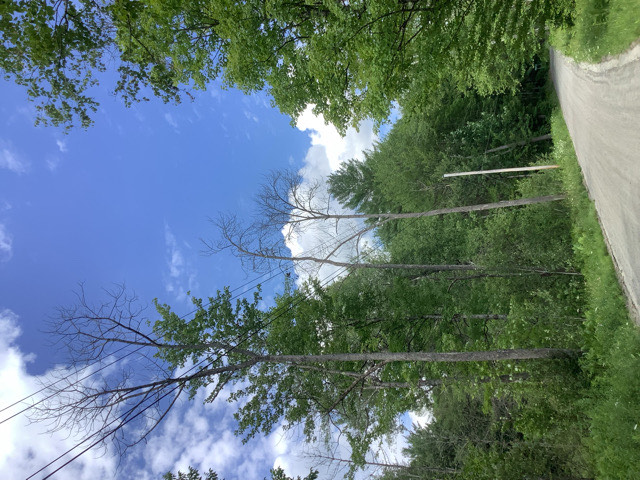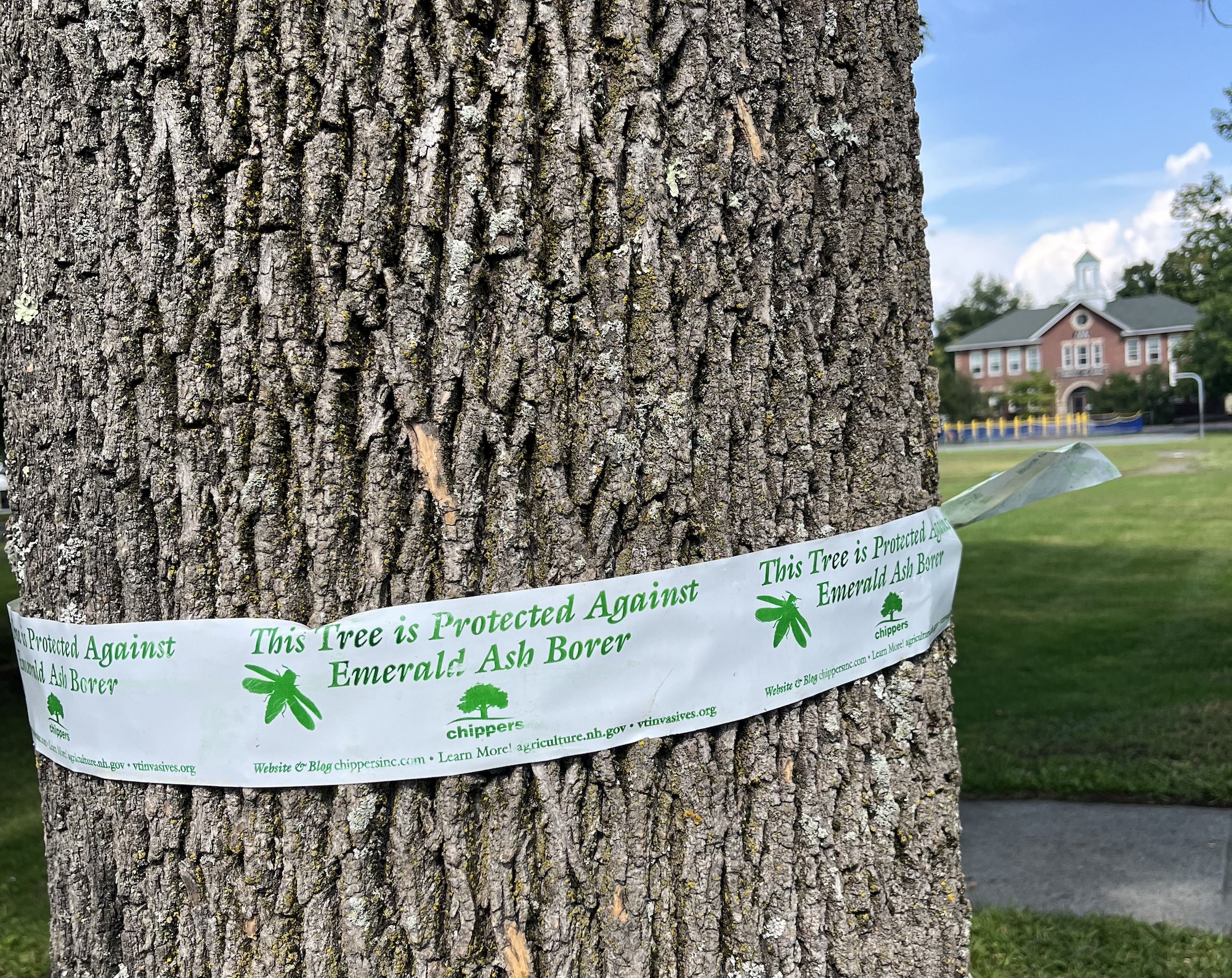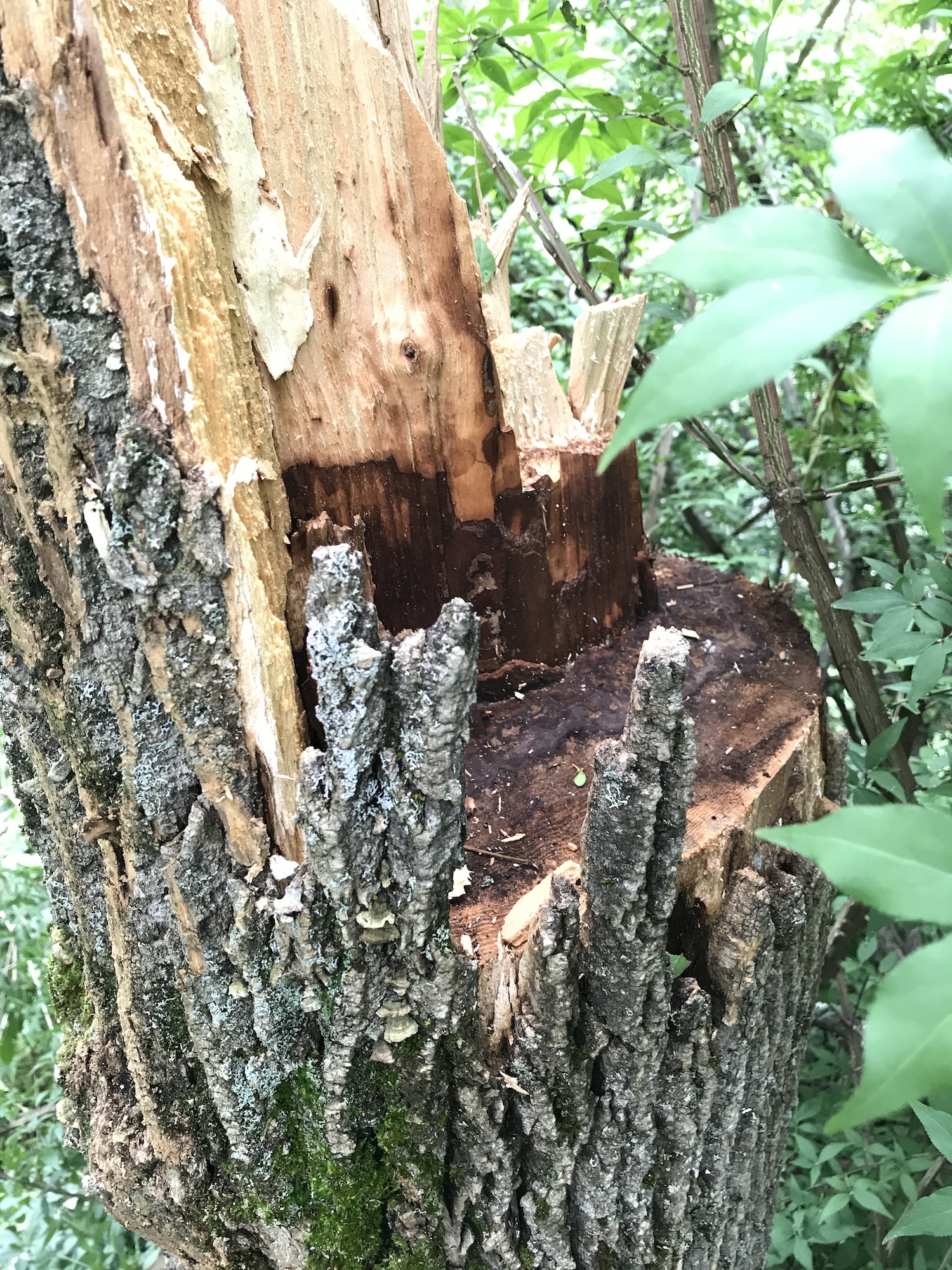Emerald ash borer (EAB) adults were active this summer, and larvae are now busily feeding on conductive tissue just below the bark within ash trees throughout our town. During the cold season on some days, one can stand on the south side of an infested ash tree and actually hear them chewing!
Norwich’s EAB Management Subcommittee (EABMS) was also busy during the summer, inventorying the extent to which ash trees threaten public safety along our roadways. We have a large number of ash in Norwich, and we all value these important trees – yet we realize that untreated ash along our roads are rapidly dying from EAB infestation. Whole trees and large branches of ash leaning over our roads will become increasingly hazardous to vehicles and pedestrians as their condition worsens.
Roadside ash inventories are underway throughout Vermont. Despite great technical support from the state Department of Forests, Parks and Recreation, volunteers like EABMS members at the town level are carrying out nearly the entire on-the-ground effort. Statewide, more than 95,000 roadside ash have so far been inventoried. In Norwich we have done over 1500 to date, identifying 560 trees as priorities for removal. Here are a few figures from other Vermont towns for perspective: Calais has inventoried 3279 ash trees and designated 1787 for priority removal; East Montpelier has inventoried 2804 roadside trees, already removed 562, and has 123 more identified as priority for removal; and in Vershire, 1380 of 2456 inventoried trees have been assigned priority status.
The EABMS has presented our town manager and selectboard with a draft request for proposals (RFP) to cut over 500 roadside ash trees. With limited funds available in this year’s town budget, we selected trees that a) pose a hazard due to their lean, proximity to the road, and/or condition; and b) are located along what we believe are the sections of town roads that combine the highest speed of travel, greatest traffic volume, and/or greatest pedestrian traffic. The trees are located on portions of six different roads and cover 14 miles: Beaver Meadow, Elm, Hopson, New Boston, Turnpike, and Union Village. We fully realize that there are many other hazardous trees needing removal along our roadways, and we hope that additional funds will be available in the future to cut them. Also, until we receive bids from licensed contractors, we cannot be certain that our allocated funds in the FY26 Norwich budget will be sufficient to cut the 500+ priority trees we have so far identified.
In preparation for removal of these roadside trees – tentatively planned for January and February – we are marking priority removal trees with a blue “X”. Later this month we will mail additional details and agreement forms to any landowner with priority removal trees along the road. Woodchips from this cutting effort will *hopefully* be available for pickup by any Norwich resident, at a location to be determined.
We appreciate our fellow Norwich residents’ patience and understanding during the upcoming process of marking and then removing hazardous roadside ash trees. There will be challenges, to be sure, but the work is vitally important for public safety in our town.
View the original post on Vital Communities